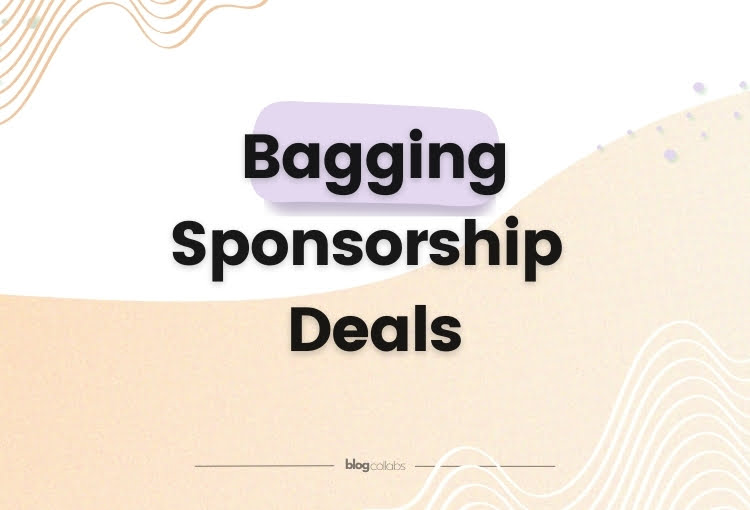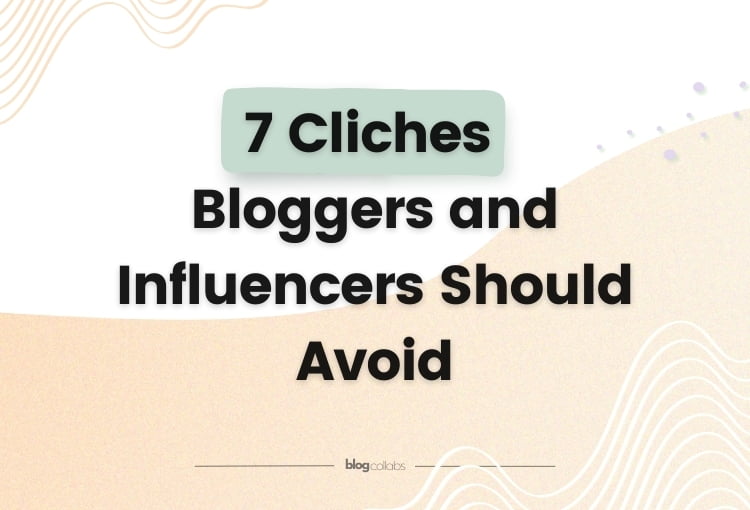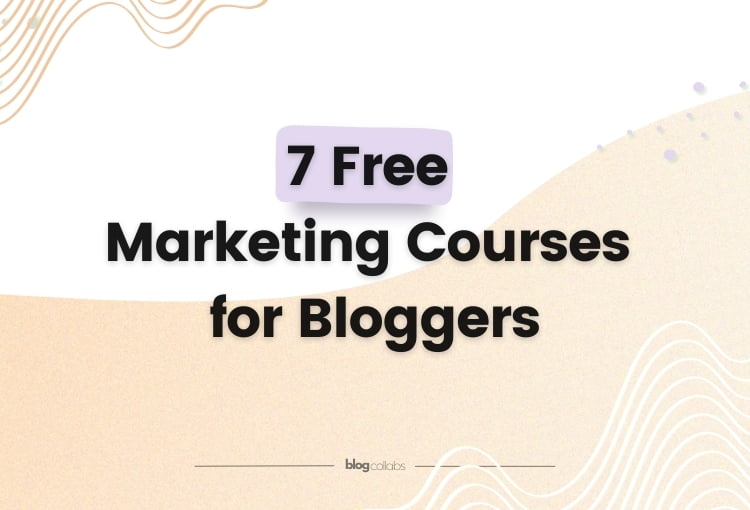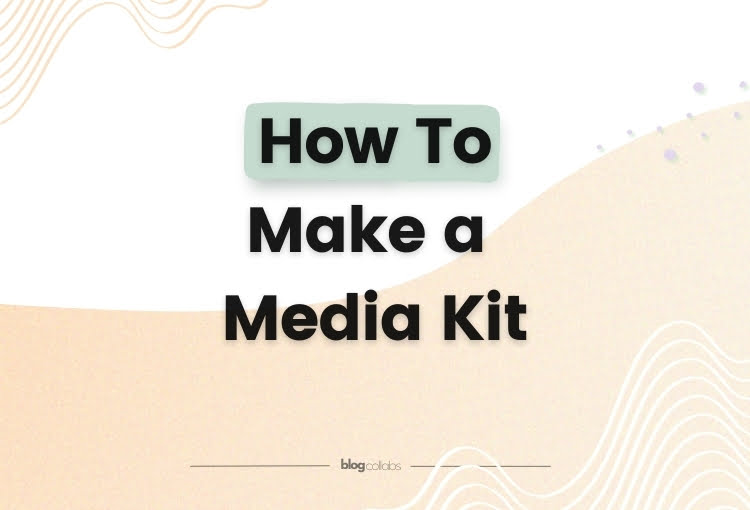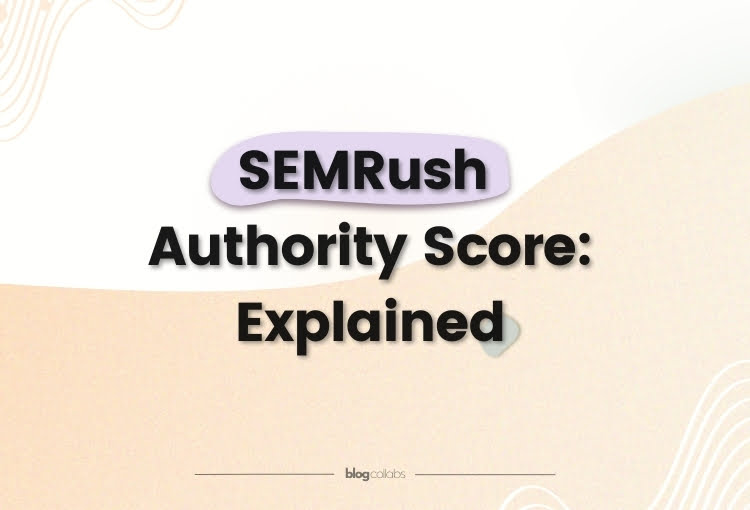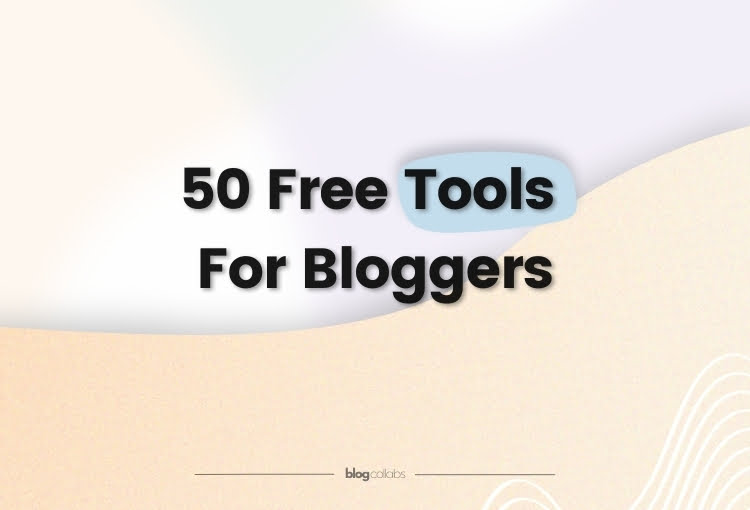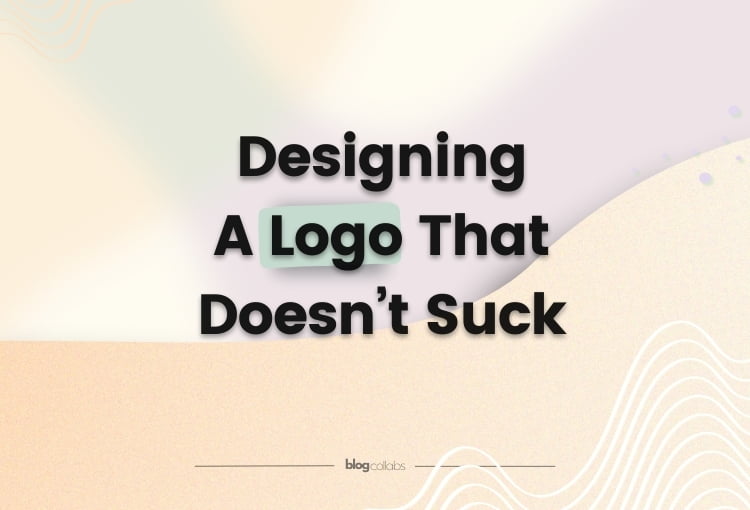How to Get Sponsorships for Your Blog
When it comes to dream jobs, nothing tops getting paid to blog or share content from exotic locations or cool photo shoots, right?
Being an influencer has become an increasingly common career ambition, particularly among youngsters. Did you know that almost 60% of the Gen Z population is interested in working in social media or being a content creator (source)? If you’re harbouring ambitions to get paid to blog or team up with trendy brands and secure sponsorship deals, you’ve come to the right place. This is the ultimate guide to bagging sponsorship deals.
We’ll also provide an overview of influencer marketing, and what it actually means to get paid to blog and share content. With a sprinkle of brilliant tips and tricks as a sort-of garnish.
What is influencer marketing?
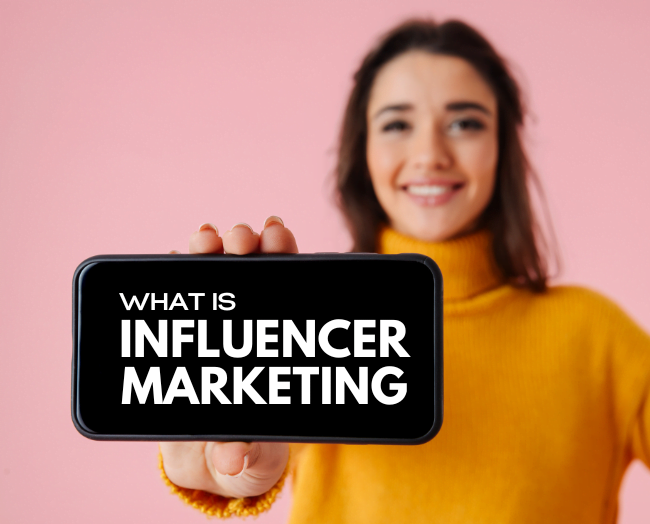
Influencer marketing is one of the newest marketing techniques, but it’s quickly become one of the most impactful. If you’ve ever used apps like Instagram, there’s every chance you’ve seen paid and sponsored posts (known as spons). You might even have succumbed to the persuasive powers of influencer marketing and ordered a product or liked a page.
I know I’ve turned many an aimless scrolling session into some sort of shopping frenzy.
Well, funnily enough, THAT’S is the aim of influencer marketing. To team up with individuals who have an online following in a bid to raise brand awareness and encourage customers to snap up products.
Influencer marketing is gathering pace at lightning speed. The stats are pretty mind-blowing. If you’ve ever dreamt of getting paid for promoting products or reviewing hotels or restaurants, now is the time to lay the foundations and get involved. Studies show that the global market size has increased from $1.7 billion in 2016 to a staggering $24 billion in 2024 (source).
Brands and businesses want to join forces with influencers for many reasons, but these are the most popular, according to a 2023 survey (source):
- Encouraging customers to be loyal to the brand
- Raising brand awareness
- Enhancing brand reputation
- Improving customer experience
An introduction to sponsored posts and brand collaborations
Unless you’ve been hiding under a rock for the last few years, or you’ve taken a stand and embraced your digital detox era, you’re probably bombarded with sponsored posts and brand collabs every. single. time. you open a social media app. Looking at you, 2024 TikTok.
There are two main types of sponsorship deals. These include:
- Brand posts: brands create posts and pay platforms for access to target audiences.
- Influencer posts: brands team up with content creators, bloggers or influencers who share their posts to reach bigger audiences.
It’s natural to think about Love Island alumni and celebrities when you hear the words ‘influencer’ and ‘brand collaborations’, but you don’t have to be a reality star to land sponsorship deals for influencers. Anyone can be an influencer. Influencers today work across all sectors. It’s not just skincare products, clothing lines and ‘must-have’ makeup buys. Influencers promote products and services across industries ranging from travel and tourism to banking, exercise and fitness and hospitality.
Opportunities for influencers are growing all the time, but how do you make it? How do you move from sharing stunning bottomless brunch pics with friends (guilty!) to popping up on thousands, or even millions, of feeds? This is the question for all aspiring content creators out there. The good news is that we’ve got the answer. Read on to see how you can make your influencer dreams come true.
How to get sponsorship deals: 10 steps to success
It’s the holy grail for a growing number of us, but how do you land that peach of a job and start getting paid for sharing posts and creating content on social media? Sadly, there’s no magical way of waving a wand and conjuring up dream collaborations, but there are some steps you can take to maximise your chances of landing incredible deals. In this section, we’ll outline some smart moves to get sponsorship deals and paid blog collaborations:
1. Define your interests/niche
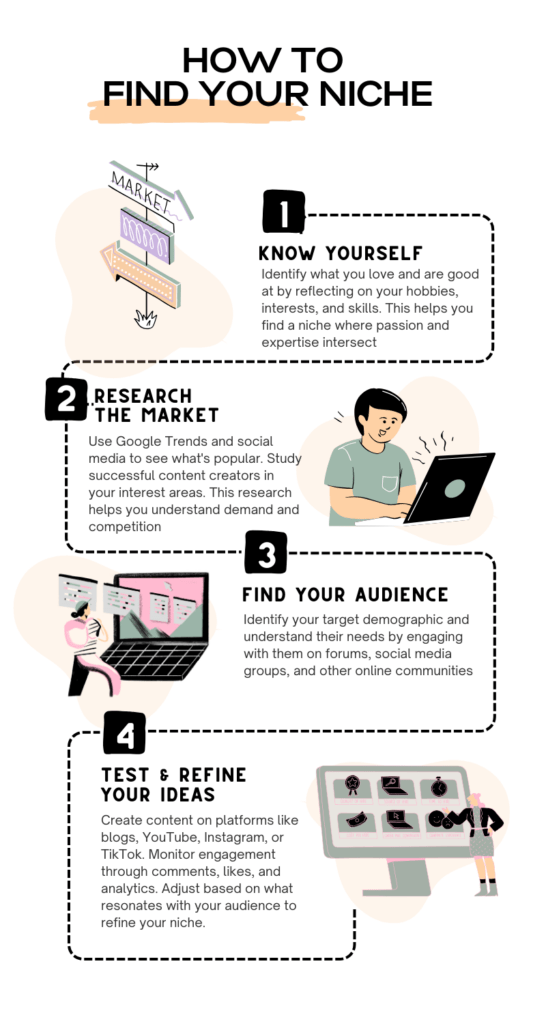
Brands search for influencers who have a specific following or area of interest. As a budding influencer, it’s important to define your interests and find your niche. Perhaps you love to post about cooking, baking and eating out, for example, or you’re into posting snaps from the gym and sharing your fitness routine. Carving out a niche makes it easy for brands to find you and it can also set you apart from other influencers. If you have a strong focus on your feed, and you post consistently using the same brand messaging and tone, businesses will be able to see how you will fit with their branding and marketing strategies.
2. Create a strong brand
Branding is not just essential for companies. It’s also hugely beneficial for influencers, bloggers and content creators. Creating a brand is all about telling people who you are and what you’re about. This goes beyond designing a logo or coming up with a catchy line or two for your bio. It’s about showing off your personality and setting out what makes you unique. Think about the style of your posts, your messaging and the way you communicate with your followers. Do you have a friendly, warm tone, or is your feed more professional? Are your posts super chic and contemporary, or is there a fun vibe? Once you’ve decided how to brand your content and feed, be consistent. Your followers should be able to spot your posts a mile off.
3. Get to know your audience
This is one of the most crucial elements for wannabe content creators. If you’re hankering after a big brand deal, it’s vital to invest time in getting to know your audience. Engage with your followers, interact with them and try to build a community. Brands want to work with influencers who have a substantial following, but they also need to ensure that the campaign will have an impact. Trust is key. If creators engage with their followers and they make the effort to learn about them and communicate openly, this builds trust. Statistics show that 63% of consumers are more likely to buy a product promoted by an influencer they trust (source).
Engaging with target audiences is not only useful for building trust. It’s also important for persuading shoppers to buy products. Brands are looking for influencers who have a genuine, authentic connection with their audience. As an influencer, you must be relatable.
If you’re working towards getting sponsorship and paid blog collaborations, be proactive in establishing relationships and researching. Basic points to cover include:
- The age, gender and location of your core audience
- The types of posts and content they enjoy most
- When they use social media
- The types of posts and deals that are most attractive and persuasive
Read comments, track engagement rates and use analytics to gather information. This will help you target relevant brands and create a really engaging and convincing pitch.
4. Share content consistently
Consistency is essential when you’re posting content online with the aim of attracting the attention of leading brands. This doesn’t mean inundating feeds with several posts a day. It means sticking to a regular pattern in line with the needs and preferences of your target followers. Some influencers may only post a day or every other day, for example. Use market research to determine the most impactful times to post and gauge how frequently your audience wants you to share content.
5. Add relevant hashtags
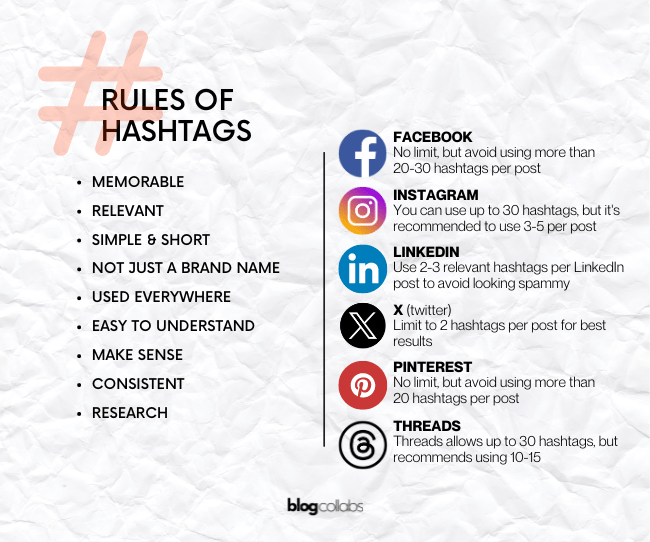
Using hashtags is a simple way to make your content easier to find. Try to be as specific as possible to reduce competition. Broader hashtags like #exercise, for example, are less effective than #exercisetips or #summerfitnessroutine and #gymworkout. Research hashtag pages to make sure your hashtags are relevant and see what other users are posting. If you’re looking to target local audiences, add a geotag.
6. Add a brand tag
Tagging a brand in your post is often the first move for aspiring influencers. If you’re ready to dip your toe in the water, find brands to tag in your posts and stories or mention in your blogs. At this point in your influencer journey, it’s wise to be realistic. In a few years’ time, you might have the biggest brands in the world queuing up to get a mention in your posts, but for now, it’s best to start small. Don’t go chasing after Nike or Benefit if you’re posting about gym wear or makeup. Start with smaller brands and look for opportunities to jump on a bandwagon that is gathering speed. Pick out businesses and labels that are on the way up.
Mentioning brands in response to user questions is a great way to get yourself noticed. If you’ve filmed a makeup tutorial, for example, and your followers ask questions about which products you’ve used or where they can buy them, tag the brand. This is a subtle way to draw attention to the brand and start a conversation. Studies show that 28% of social media marketers consider brand mentions a crucial metric for measuring efficacy (source). Adding repeated tags can help to get a brand interested, but avoid overkill. Don’t repeatedly tag a brand if you haven’t been asked to share information about the products, for example.
7. Update your bio
If a brand is interested in working with you or even just having a quick chat, you want to make sure that you’re easy to reach. Update your bio and make sure you’ve got the right contact information. Link other social media accounts and your website.
Brand representatives will probably want to get to know you or learn more about you before offering you any kind of sponsorship deal. It’s a fantastic idea to add a link to a press kit or page to give brands access to more information. Once you start building a portfolio, you can share details of previous campaigns and showcase your work.
8. Reach out to brands
In an ideal world, we’d be able to sit around and wait for golden opportunities to land in our laps, but who are we trying to kid? Success doesn’t come without hard work and effort. If you want to be an influencer, sometimes, you have to bite the bullet and get your name out there. It would be perfect if brands approached you and begged you to team up with them while adorning you with free products and offering you a big paycheck. In reality, you might have to make the first move. As a newbie, it’s harder to attract attention so being proactive can be helpful.
Before you contact brands, research potential candidates. Learn more about brands that operate within your chosen sector, look at profiles and feeds to get an idea of their online activity and view previous posts and marketing campaigns. Look for brands that actively engage with followers online and see if they’ve used influencers before. Create a shortlist.
Once you have a list of brands you’d like to work with, work on your pitch and write an email. Your pitch should include:
- A brief introduction: Who you are, what you like doing and what your personal brand stands for
- What you do: An overview of your interests and passions and the kind of content you create
- Your following: A short summary providing information about your audience
- Your experience: Details of previous campaigns, links to your blog and website and any other achievements, which highlight your skills, experience and expertise
- Additional information, which establishes you as an excellent fit for the brand: Examples include follower count, audience demographic and engagement data
As well as emailing brands, you could also send a direct message on Instagram or use professional networks, such as LinkedIn. Remember to tailor the pitch to the brand. You may need to modify your pitch when approaching different brands.
9. Take advantage of creator hubs and websites
The life of a budding influencer isn’t always fun and glamorous. It’s not always easy to identify opportunities for paid blog collaborations and sponsored Instagram or TikTok posts. It can also be time-consuming to approach brands and wait for responses. To make life easier, take advantage of creator hubs and websites that connect brands with creators, such as BlogCollabs and the Creator Marketplace. Set up a customised, optimised profile, add a portfolio and browse projects. Check your messages frequently. If you like the look of a project, all you have to do is click a button to say that you’re interested. If you’re just starting, this is a brilliant way to try and get some work. You can register your interest in multiple projects, so get scrolling!
10. Think about prices
It’s 2024, and we should all be living by the mantra, ‘Know your worth, honey.’ It may seem like a dream to get paid for doing blog collabs or sponsored Instagram posts, but don’t forget that being an influencer is a job. Yes, you might be bouncing around the living room when you get an offer from a brand, but try to play it cool. You want to pursue a career and seize opportunities like getting paid to blog, but you also need to make sure that brands are not taking liberties. Creating high-quality, engaging, impactful content can be time-consuming and it requires effort and skill. Influencers are in demand. Research shows that a whopping 92% of brands are planning to increase spending on influencer marketing in 2024 (source).
Think about prices before you go into a pitch. If you’re new to the game, you might want to jump at an offer of a freebie in exchange for a post, but don’t forgo chances to monetise your work. There’s no harm in negotiating with brands, as long as you don’t go too far and insult representatives or promise something you can’t deliver. Start with a base price and be realistic. As you build a portfolio and gain exposure, you can increase your prices.
What to know before you accept a sponsorship deal
You’ve followed the steps above and an offer has landed in your inbox, ker-ching! But what happens next? Do you automatically reply and accept, or do you take the time to read and digest the details? As a beginner, you might go for the first option, but as a mogul in the making, it’s wise to use your head and opt for the second. Always take the time to read a sponsorship deal proposal, even if it seems fabulous on the surface. There are key aspects to consider before accepting, including:
- The brand’s reputation
Influencer marketing can be mutually beneficial for content creators and brands, but this is only the case if both have an excellent reputation. Consider the brand’s reputation and brand image. You want the partnership to enhance your credentials and reputation, rather than damaging it. If you work with brands that don’t have a good track record or public image, this could change the way your followers view you and impact future prospects. You might not want to be picky in the early days but try to avoid any sponsorship deals that may affect your reputation negatively.
- The audience
The second thing to think about is the brand’s audience. Are you a natural fit, or is there a clear disconnect? If you blog about fitness, for example, focus on teaming up with brands that sell sports and fitness equipment or activewear. It wouldn’t work if you suddenly started posting about personal loans or kitchenware. Analyse the brand’s feed and posts, look at the company website and read blog articles. Try to get a sense of the demographic of the audience and engagement levels.
- Contracts, rules and regulations
Being an influencer isn’t as simple as taking a photo of a product or writing a review and posting it. There are rules and regulations in place to protect content creators, brands and consumers. Make sure you are aware of the regulations, for example, including details about sponsored or paid partnerships on your posts. Check the details of any contracts you have with brands with a fine-toothed comb. It’s important that you know about copyright and content rights, for example.
Requirements and pay
Your contract should outline the brand’s requirements. Make sure you are aware of what the client expects from you before you accept a sponsorship deal. Read the details carefully and don’t be afraid to ask questions to get clarity. You don’t want to create a load of content and then have to battle to get your money.
Key takeaways
- Influencer marketing is growing: Over 90% of brands spend to increase their influencer marketing budget in 2024
- You don’t have to be a celebrity or a reality TV star to be an influencer
- Influencers now work across all industries
- The best way to get started is to find your niche, create a strong brand identity and post consistently
- Reach out to brands that share your interests and values by tagging them in posts and emailing your press kit or a link to your website
- Start small: It’s great to be ambitious, but it’s unrealistic to think you can bag a deal with a brand that has millions of followers overnight
- Focus on teaming up with brands that are relevant to your interests and your target audience
- Use content creator platforms and marketplaces to find projects
- Consider every sponsorship and paid collaboration offer carefully: Choose reputable brands that have a similar target audience
So.. what’s next?
Getting paid for sponsored blog posts and social media content is a dream job, right? For over 50% of the Gen Z crowd, this is the ultimate career path, but being an influencer isn’t always a walk in the park, especially at the beginning. You have to work hard and be prepared to start small and grow your following and your portfolio.
Follow the steps in this guide to get yourself noticed and bring brands to your inbox. Define your niche, be clear about your personal brand and be consistent. Engage with your audience, use targeted hashtags to make your content more visible and tag brands in your posts. Focus on quality over quantity and research thoroughly to identify brands that fit your interests and your following. Reach out and connect with brands and use creator platforms and marketplaces to discover projects. Create a press kit and tailor pitches to the individual client. Always take the time to review proposals before you accept offers.
